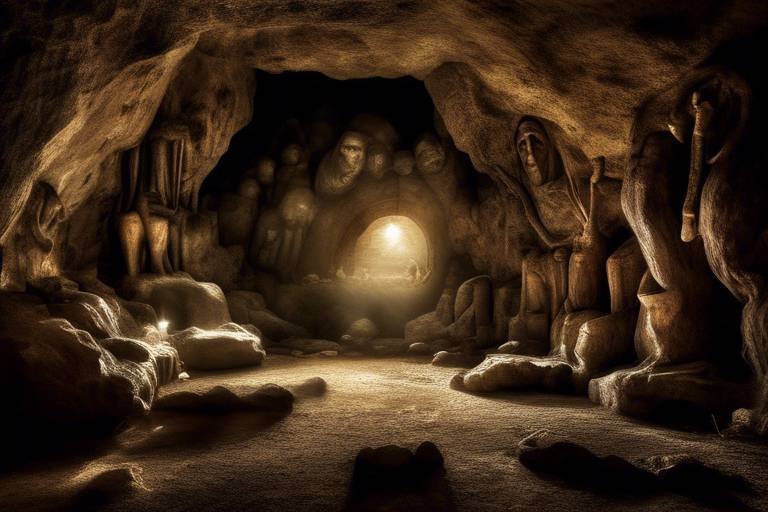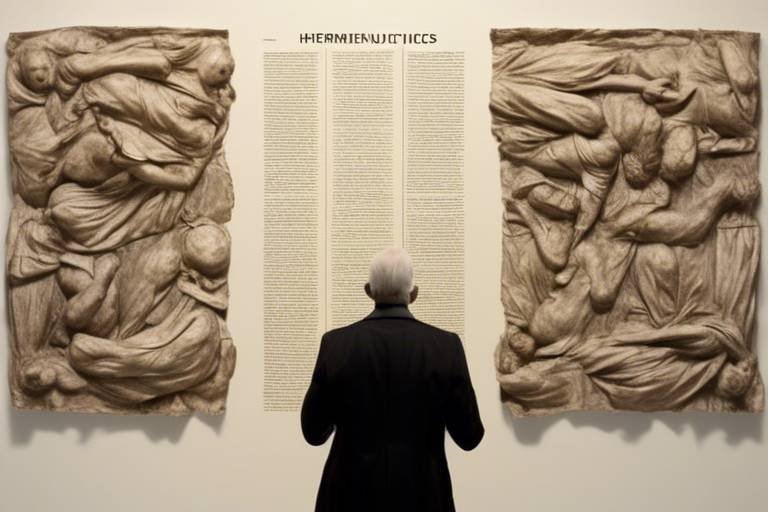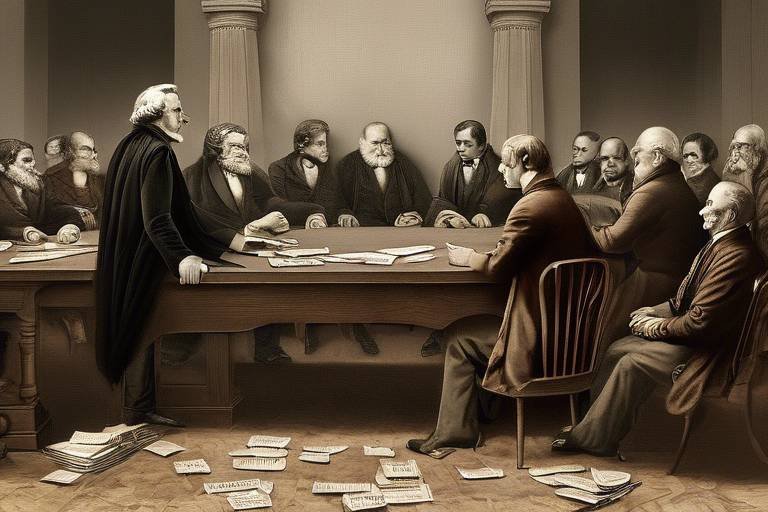The Cave Allegory - Plato's Philosophy Revisited
This article explores Plato's Cave Allegory, examining its significance in understanding human perception, reality, and enlightenment. We delve into its implications for modern philosophy and education.
The Cave Allegory is a powerful metaphor illustrating the difference between the world of appearances and the world of reality, emphasizing the importance of philosophical inquiry and enlightenment. Imagine being trapped in a dark cave for your entire life, only able to see shadows flickering on the wall. These shadows represent everything you know, but they are mere reflections of the true forms that exist outside the cave. This scenario sets the stage for an exploration into the depths of human understanding and the quest for knowledge.
In Plato's philosophy, the nature of reality is a complex interplay between appearances and essence. He argues that what we perceive through our senses is just a shadow of the true forms that embody ultimate truth and knowledge. This distinction is crucial; it teaches us that our senses can often deceive us, leading us to form opinions based on incomplete or distorted information. To illustrate this, consider the difference between a photograph and the actual subject it depicts. The photograph may capture a moment, but it can never fully encapsulate the essence of the experience itself. In this way, the shadows on the wall of the cave symbolize our limited understanding of reality.
Shadows symbolize misconceptions and ignorance, representing how individuals perceive reality through limited perspectives. Just like the prisoners in the cave, many people today live in a world filled with illusions, believing in what they see without questioning its authenticity. This is where the danger lies; when we accept these shadows as reality, we risk becoming complacent in our understanding of the world. For example, social media often presents a curated version of life that can lead to unrealistic expectations and distorted self-images. The challenge is to recognize these illusions and strive for a deeper understanding of what lies beyond the surface.
We will explore contemporary parallels of shadows and illusions, showcasing how societal norms and media influence our perception of reality. In today's fast-paced world, we are bombarded with information that often shapes our beliefs and values:
- Advertising creates idealized images that can distort our self-perception.
- News outlets may present biased views that shape public opinion.
- Social media platforms often highlight only the best moments of life, leading to comparison and dissatisfaction.
These examples illustrate how easily we can fall into the trap of believing in shadows instead of seeking the truth that lies beyond them.
Strategies for overcoming these illusions will be discussed, emphasizing critical thinking and self-reflection as tools for gaining deeper insights into reality. To break free from the cave, one must be willing to question assumptions and challenge the status quo. Here are a few strategies to consider:
- Engage in discussions that challenge your viewpoints.
- Practice mindfulness to become aware of your thoughts and biases.
- Seek out diverse perspectives to broaden your understanding.
By employing these strategies, we can begin to peel back the layers of illusion and uncover the deeper truths about our existence.
This section outlines the philosophical journey one undertakes to attain enlightenment, moving from ignorance to knowledge and understanding the true essence of existence. Just as the prisoner in the allegory ascends from the darkness of the cave into the light, we too must embark on a journey of discovery. This journey is not always easy; it requires courage to confront uncomfortable truths and the humility to accept that our previous beliefs may have been flawed. However, the rewards of enlightenment are profound, offering a clearer understanding of ourselves and the world around us.
Plato's allegory has profound implications for education, urging educators to encourage critical thinking and foster environments where students can seek knowledge beyond mere appearances. In a world where information is readily accessible, it is essential for students to develop the ability to discern credible sources from misleading ones.
Effective methods for teaching critical thinking skills will be examined, enabling students to question assumptions and explore deeper truths. This can be achieved through:
- Encouraging open dialogue in classrooms.
- Implementing problem-based learning that challenges students to think critically.
- Fostering a culture of inquiry where questioning is welcomed.
By instilling these skills, educators can empower students to break free from the shadows and seek the light of knowledge.
We will discuss how to create educational environments that promote exploration, inquiry, and the pursuit of wisdom, aligning with the ideals presented in the Cave Allegory. This involves creating spaces that are not only conducive to learning but also inspire curiosity and creativity. Implementing project-based learning, interdisciplinary studies, and experiential learning opportunities can help students connect theoretical knowledge with real-world applications. Ultimately, the goal is to cultivate a generation of thinkers who are not afraid to venture beyond the cave and seek the truth.
1. What is the main message of Plato's Cave Allegory?
The main message is that reality is often obscured by our perceptions, and enlightenment comes from seeking deeper truths beyond mere appearances.
2. How does the Cave Allegory relate to modern society?
It highlights how media and societal norms can create illusions that shape our understanding of reality, urging us to question what we accept as true.
3. What role does education play in overcoming ignorance?
Education fosters critical thinking, encouraging individuals to question assumptions and seek knowledge beyond superficial appearances.
4. How can one begin their journey to enlightenment?
Start by questioning your beliefs, seeking diverse perspectives, and engaging in self-reflection to uncover deeper truths about yourself and the world.

Understanding the Cave Allegory
The Cave Allegory, found in Plato's work "The Republic," serves as a compelling metaphor for the human condition. Imagine a group of people who have been chained inside a dark cave for their entire lives. They can only see the wall in front of them, where shadows are cast by objects behind them, illuminated by a fire. These shadows represent the only reality they know, leading them to believe that what they see is the entirety of existence. This scenario is not just a tale from ancient philosophy; it resonates deeply with our modern lives, highlighting how perception can shape reality.
At its core, the Cave Allegory emphasizes the distinction between the world of appearances, which is often deceptive, and the world of forms, which embodies true knowledge. Plato argues that most people live in a state of ignorance, perceiving only the shadows of reality. This limited view is akin to watching a movie on a small screen while unaware of the vast world outside the theater. The allegory challenges us to question our surroundings and seek a deeper understanding of the world, urging us to step out of our comfort zones and embrace philosophical inquiry.
In this allegory, the journey of the prisoner who escapes the cave symbolizes the philosophical quest for enlightenment. As he ascends to the surface and experiences the bright light of the sun, he begins to see the world as it truly is, rather than just the flickering shadows. This transformation from ignorance to knowledge is not only enlightening but also a profound reminder that true understanding requires effort and courage. The moment he realizes that the sun represents the ultimate truth is akin to a light bulb moment—an epiphany that can change one's entire perspective on life.
Moreover, the Cave Allegory has significant implications for how we approach education and knowledge acquisition. It suggests that education should not merely be about rote memorization or passive acceptance of information. Instead, it should be a dynamic process that encourages critical thinking, exploration, and the questioning of established norms. Just as the escaped prisoner had to adjust to the blinding light of the sun, students must be prepared to confront uncomfortable truths and challenge their preconceived notions.
In summary, the Cave Allegory is a powerful philosophical tool that invites us to reflect on our perceptions of reality. It encourages us to break free from the chains of ignorance and seek the light of knowledge. By understanding this allegory, we can better appreciate the importance of philosophical inquiry and the transformative power of education in our lives.

The Nature of Reality
The nature of reality is a complex and often debated topic, and Plato’s Cave Allegory serves as a profound lens through which we can examine this intricate concept. In the allegory, prisoners are confined in a dark cave, only able to see shadows cast on the wall by objects behind them. These shadows represent the world of appearances, a mere reflection of the true forms that exist outside the cave. Plato argues that what we perceive through our senses is limited and often misleading, leading us to form a distorted understanding of reality. This distinction between shadows and forms is crucial in grasping the essence of true knowledge.
To further understand this, let’s break down Plato’s views on reality. He posits that there are two realms: the visible realm, which encompasses the world we see and interact with daily, and the intelligible realm, which contains the ultimate truths and forms. The visible realm is filled with illusions and misconceptions, while the intelligible realm is where true knowledge resides. This duality prompts us to question: how often do we mistake shadows for reality? How frequently do we accept societal norms and media portrayals as absolute truths?
In modern life, we encounter numerous examples of these shadows and illusions. For instance, social media often presents a curated version of reality, where people showcase only the best aspects of their lives, leading to a skewed perception of success and happiness. Similarly, advertisements create a facade of perfection, enticing us to believe that we need certain products to achieve fulfillment. These modern shadows can cloud our judgment and hinder our ability to see the true forms of happiness and success.
Overcoming these illusions requires a conscious effort to engage in critical thinking and self-reflection. By questioning our beliefs and the information presented to us, we can begin to peel back the layers of misconception. Consider the following strategies:
- Question Assumptions: Regularly challenge your own beliefs and the status quo.
- Seek Diverse Perspectives: Engage with different viewpoints to broaden your understanding.
- Reflect on Experiences: Take time to analyze your experiences and the lessons learned from them.
By actively participating in this journey of enlightenment, we can transition from ignorance to knowledge, moving towards a clearer understanding of our existence. Plato’s allegory not only highlights the importance of recognizing the shadows but also emphasizes the transformative power of seeking the truth. As we embark on this philosophical journey, it becomes evident that the quest for knowledge is not just an academic endeavor but a vital aspect of our personal growth and understanding of the world around us.

Shadows and Illusions
In Plato's Cave Allegory, the shadows cast on the wall represent the misconceptions and illusions that many individuals experience in their daily lives. These shadows are not merely reflections of objects; they symbolize the limited understanding that arises from living in a world dominated by appearances. It's like watching a movie with the lights turned off—you can see the flickering images, but without clarity, you miss the essence of the story. This metaphor serves as a reminder of how our perceptions can be distorted, leading us to accept false realities as the truth.
The shadows on the wall are akin to the media narratives and societal norms that shape our understanding of the world. Just think about it: how often do we take information at face value without questioning its authenticity? For instance, social media often presents a curated version of reality, where only the most glamorous moments are shared. This creates a distorted perception of life, making us believe that everyone else is living in constant happiness, while we grapple with our own challenges. The shadows are everywhere, influencing our thoughts, choices, and even our values.
Moreover, these illusions can lead to a profound sense of ignorance. When individuals are content to live in the realm of shadows, they miss the opportunity for growth and understanding. Imagine a person who only ever sees the reflection of a beautiful painting; they might admire the colors and the composition, yet they never grasp the artist's intention or the emotions behind the artwork. This is the danger of accepting shadows as reality—it's a superficial existence that stifles deeper inquiry and enlightenment.
To illustrate this point further, let's consider a few common examples of shadows and illusions in modern life:
- Consumer Culture: Advertisements often create an idealized version of products, leading consumers to believe that happiness is just a purchase away.
- Social Media: Platforms like Instagram can create an illusion of perfection, where users compare themselves to others based on filtered images and curated lives.
- Political Narratives: News outlets can shape public opinion by emphasizing certain stories while neglecting others, creating a skewed understanding of current events.
Recognizing these shadows is the first step toward overcoming them. It requires a commitment to critical thinking and a willingness to question the narratives we encounter. By adopting a more inquisitive mindset, individuals can start to peel back the layers of illusion and gain a clearer perspective on reality. Just like the prisoners in the cave who eventually turn around to see the light, we too can embark on a journey toward enlightenment, moving beyond the shadows that once confined us.
In conclusion, the shadows and illusions that Plato describes in his allegory are not just relics of ancient philosophy; they are very much present in our contemporary lives. By acknowledging these distortions and actively seeking the truth, we can break free from the chains of ignorance and step into the light of understanding.
- What is the main message of Plato's Cave Allegory? The allegory emphasizes the difference between the world of appearances and the world of reality, encouraging individuals to pursue knowledge and enlightenment.
- How can we identify shadows in our lives? Shadows can be identified by questioning the sources of our beliefs and perceptions, examining whether they are based on facts or mere appearances.
- What role does critical thinking play in overcoming illusions? Critical thinking enables individuals to analyze information, challenge assumptions, and seek deeper truths beyond superficial understanding.
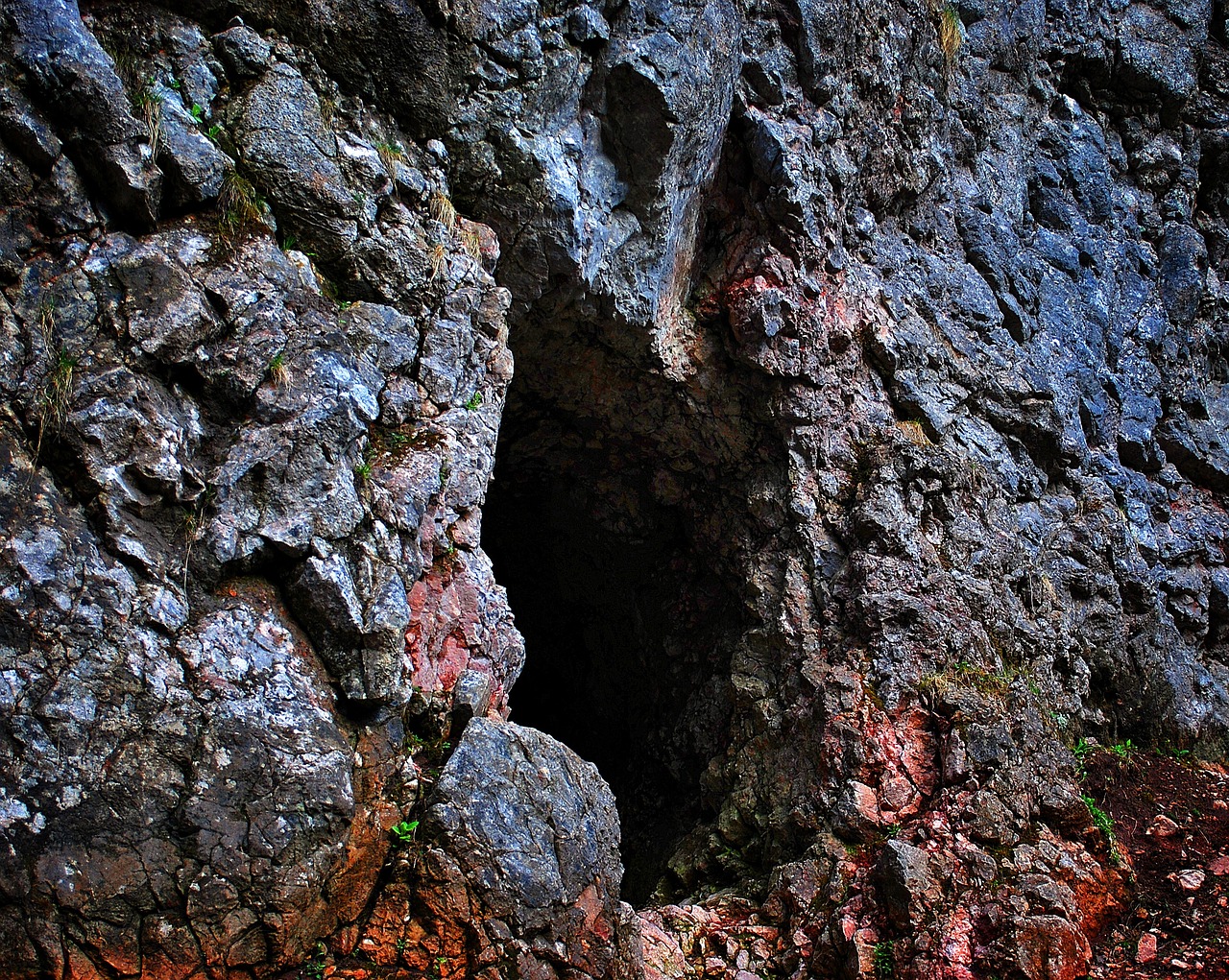
Examples in Modern Life
In our fast-paced, technology-driven world, the shadows cast by societal norms and media are more prevalent than ever. Just like the prisoners in Plato's cave, many of us find ourselves staring at the flickering images on the wall, believing them to be the entirety of reality. Consider how social media shapes our perceptions: we often see curated snippets of others' lives, leading us to form misconceptions about happiness and success. This phenomenon can create a distorted reality, where the illusion of a perfect life overshadows the complexities of actual existence.
Moreover, advertising serves as another modern-day example of shadows. Brands often project idealized versions of life, promoting products that promise happiness or fulfillment. When consumers chase these ideals, they may overlook the deeper truths about personal satisfaction and self-worth. For instance, a flashy car or designer clothing is marketed as a pathway to happiness, but in reality, these are merely fleeting symbols of status that can distract us from what truly matters.
Another area where shadows manifest is in our political landscape. Misinformation and propaganda can manipulate public opinion, leading individuals to accept distorted views of reality. This is akin to the prisoners in the cave who, having never seen the outside world, accept the shadows as their only truth. The implications are profound: when we fail to question the narratives presented to us, we risk becoming prisoners of our own ignorance.
To illustrate these points, let's look at a few specific examples:
- Social Media Influencers: Many individuals idolize influencers who project an unattainable lifestyle, often failing to recognize the carefully curated nature of their content.
- News Media: The selective presentation of news can shape public perception, creating a skewed understanding of events and issues.
- Consumer Culture: The relentless pursuit of material goods is often marketed as a path to happiness, overshadowing the importance of relationships and personal growth.
These examples highlight the necessity of critical thinking and self-reflection. By acknowledging that what we see may not be the whole truth, we can begin to peel back the layers of illusion and seek out the true forms of reality. It’s essential to engage with the world actively, questioning the narratives we encounter and striving to understand the deeper truths that lie beyond the shadows.
Q: What is the Cave Allegory?
A: The Cave Allegory is a philosophical metaphor by Plato that illustrates the difference between the world of appearances and the world of reality, emphasizing the importance of enlightenment and philosophical inquiry.
Q: How can I apply the Cave Allegory to my life?
A: You can apply the Cave Allegory by questioning your perceptions and seeking deeper truths in your experiences, rather than accepting surface-level appearances.
Q: What are some ways to overcome illusions in modern life?
A: Strategies include practicing critical thinking, engaging in self-reflection, and surrounding yourself with diverse perspectives to challenge your understanding of reality.
Q: Why is critical thinking important in education?
A: Critical thinking encourages students to question assumptions, explore deeper truths, and develop a more nuanced understanding of the world, aligning with the ideals presented in the Cave Allegory.
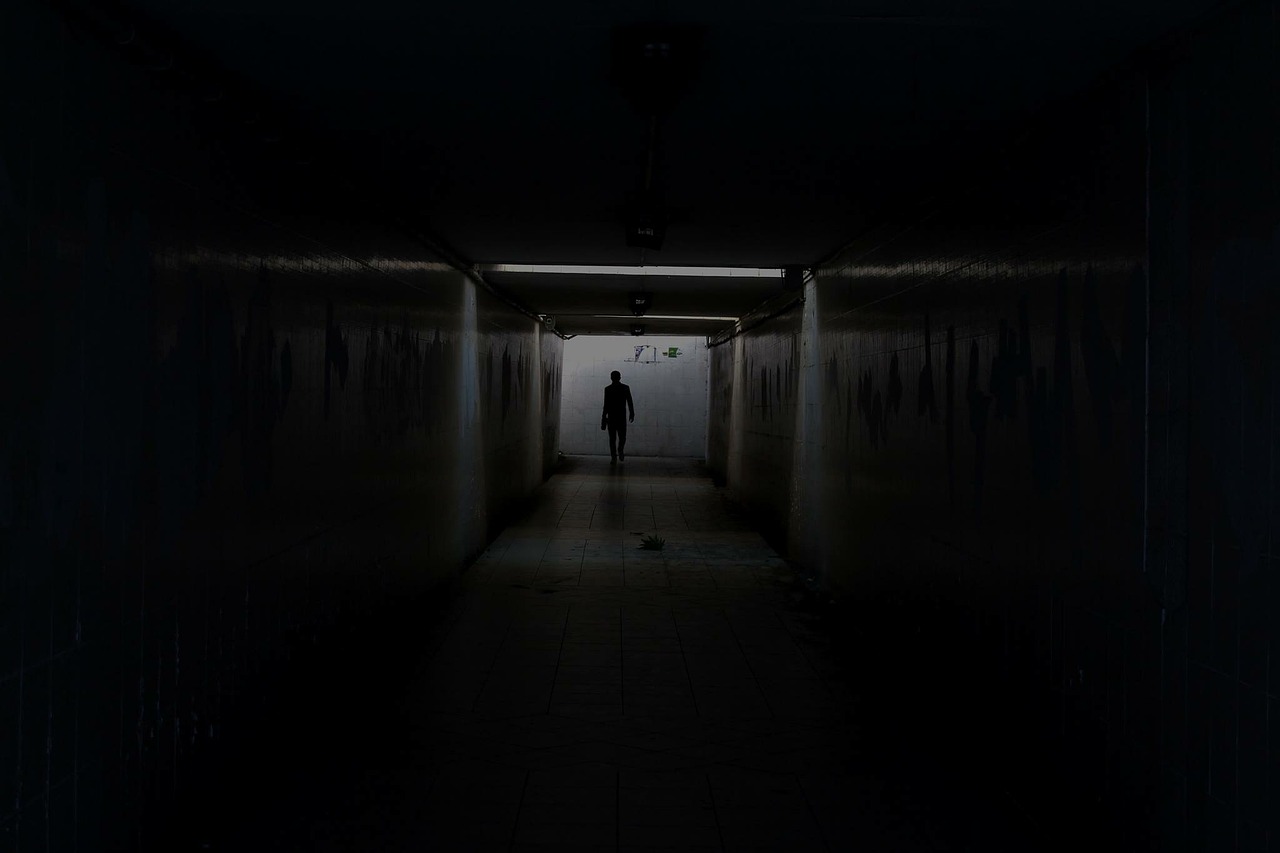
Overcoming Illusions
Overcoming illusions is not just a philosophical exercise; it's an essential journey for anyone seeking a deeper understanding of reality. Just like waking up from a dream, this process requires effort, courage, and a willingness to confront uncomfortable truths. To break free from the chains of ignorance, we must first recognize the shadows that cloud our perception. These shadows are often shaped by societal norms, media portrayals, and personal biases, leading us to accept a distorted version of reality.
One effective strategy for overcoming these illusions is to engage in critical thinking. This involves questioning the information we receive and analyzing it from multiple perspectives. Ask yourself: What evidence supports this claim? Who benefits from this narrative? By challenging assumptions, we can begin to peel back the layers of deception that obscure our understanding.
Additionally, self-reflection plays a crucial role in this journey. Taking the time to introspect allows us to examine our beliefs and values critically. Consider keeping a journal where you can jot down your thoughts and feelings about various topics. This practice not only promotes clarity but also encourages personal growth as you confront your own biases and misconceptions.
Moreover, surrounding ourselves with diverse viewpoints can significantly enhance our ability to see beyond the shadows. Engaging in discussions with individuals from different backgrounds and experiences exposes us to new ideas and challenges our preconceived notions. It’s like shining a flashlight into the dark corners of our minds, illuminating areas we may have previously overlooked.
In the age of information overload, it's vital to cultivate a discerning mindset. Here are some tips to help you navigate the complexities of modern media and communication:
- Verify Sources: Always check the credibility of the information before accepting it as truth.
- Seek Multiple Perspectives: Don’t rely on a single source of information; explore various viewpoints to gain a well-rounded understanding.
- Practice Mindfulness: Stay present and aware of your thoughts and feelings, which can help you recognize when you're being influenced by external factors.
Ultimately, overcoming illusions is a continuous process. It requires a commitment to lifelong learning and a genuine desire to seek out the truth. Just as the prisoners in Plato's Cave had to turn around and face the light, we too must be willing to confront our own shadows. By embracing the journey of enlightenment, we can move closer to understanding the true essence of our existence and the world around us.
Q: What is the Cave Allegory?
A: The Cave Allegory is a metaphor created by Plato to illustrate the difference between the world of appearances and the world of reality, emphasizing the importance of philosophical inquiry and enlightenment.
Q: How can critical thinking help in overcoming illusions?
A: Critical thinking encourages us to question assumptions, analyze information, and seek evidence, which helps us see beyond the shadows and understand deeper truths.
Q: Why is self-reflection important?
A: Self-reflection allows us to examine our beliefs and biases, promoting personal growth and a clearer understanding of our perceptions of reality.
Q: How can I engage with diverse viewpoints?
A: Engaging in discussions with individuals from different backgrounds, reading diverse literature, and exploring various media can expose you to new ideas and challenge your existing beliefs.

Journey to Enlightenment
The journey to enlightenment is akin to climbing a steep mountain, where each step taken unveils a clearer view of the world around us. Just like the climber who begins in the valley, shrouded in fog, we often find ourselves trapped in the shadows of ignorance. This journey requires not only a willingness to ascend but also the courage to confront the discomfort of leaving familiar surroundings. As we move upwards, the air becomes thinner, and the light grows brighter, symbolizing the gradual shedding of misconceptions and the embrace of deeper truths.
In Plato's Cave Allegory, the prisoner who escapes the cave represents every individual who embarks on this transformative path. Initially, the journey is fraught with challenges; the blinding sunlight can be overwhelming after a lifetime spent in darkness. However, it is only through this discomfort that one begins to see the world as it truly is. The process of enlightenment involves several key stages:
- Realization of Ignorance: The first step is acknowledging that our current understanding of reality is limited. This realization can be unsettling, as it requires us to question long-held beliefs.
- Seeking Knowledge: Once we recognize our ignorance, the quest for knowledge begins. This might involve engaging with philosophical texts, participating in discussions, or exploring different perspectives.
- Critical Reflection: As we gather knowledge, critical thinking becomes essential. We must evaluate the information we encounter, discerning between genuine understanding and mere opinion.
- Integration of Insights: Enlightenment is not merely about accumulating facts; it’s about integrating these insights into our worldview, allowing them to transform our perceptions and actions.
As we embark on this journey, it's essential to remember that enlightenment is not a destination but a continuous process. Each new insight leads to further questions, creating a cycle of growth and discovery. Just like the climber who pauses to take in the breathtaking view, we must take time to reflect on our progress and celebrate our achievements, no matter how small.
Moreover, the journey to enlightenment can be shared with others. Engaging in dialogues with fellow seekers can illuminate blind spots in our understanding and foster a sense of community. This collective pursuit of truth not only enriches our own experiences but also contributes to the enlightenment of others. Just as Plato emphasized the importance of philosophical inquiry, we too should encourage those around us to embark on their journeys, creating a ripple effect of enlightenment.
In conclusion, the journey to enlightenment is a profound and personal experience. It challenges us to confront our limitations, seek knowledge, and embrace the discomfort of growth. By navigating this path with curiosity and courage, we can move from the shadows of ignorance into the light of understanding, transforming not only ourselves but also the world around us.
1. What is the Cave Allegory?
The Cave Allegory is a philosophical metaphor created by Plato that illustrates the difference between the world of appearances and the world of reality, emphasizing the importance of enlightenment.
2. How does one begin the journey to enlightenment?
Starting the journey involves recognizing your own ignorance, seeking knowledge, and engaging in critical reflection to transform your understanding of reality.
3. Why is critical thinking important in the journey to enlightenment?
Critical thinking allows individuals to evaluate information, discern truth from illusion, and integrate insights into their worldview, fostering a deeper understanding of existence.
4. Can the journey to enlightenment be shared with others?
Absolutely! Engaging in discussions and sharing insights with others can enhance the journey, illuminate blind spots, and create a community of seekers.

Implications for Education
The implications of Plato's Cave Allegory for education are both profound and transformative. In a world where information is abundant but often misleading, educators are tasked with the critical responsibility of guiding students toward genuine understanding. The allegory serves as a reminder that education should not merely be about filling students with facts; rather, it should be about fostering an environment where they can question, explore, and ultimately discover the deeper truths of existence. By encouraging students to step out of their metaphorical caves, educators can help them break free from the shadows of ignorance and embrace the light of knowledge.
One of the key lessons from the Cave Allegory is the importance of critical thinking. In today's fast-paced society, where opinions often masquerade as facts, teaching students to think critically is essential. This means empowering them to analyze information, recognize biases, and differentiate between mere appearances and underlying realities. When students learn to question the information presented to them, they develop the skills necessary to navigate the complexities of modern life.
Furthermore, the Cave Allegory highlights the necessity of creating enlightening educational environments. Such environments should encourage exploration and inquiry rather than rote memorization. Imagine a classroom where students are not just passive recipients of knowledge but active participants in their learning journey. This can be achieved through various methods, including:
- Project-Based Learning: Engaging students in real-world projects that require them to apply their knowledge and think critically.
- Collaborative Discussions: Encouraging open dialogue where students can share their perspectives and challenge each other's ideas.
- Interdisciplinary Approaches: Integrating different subjects to provide a more holistic understanding of complex issues.
By implementing these strategies, educators can create a dynamic learning atmosphere that not only enlightens students but also inspires them to seek knowledge beyond the classroom. The goal is to cultivate a generation of thinkers who are not afraid to question the status quo and who possess the intellectual tools necessary to uncover the truth.
In conclusion, the implications of Plato's Cave Allegory extend far beyond the ancient world; they resonate deeply within our modern educational systems. As we strive to prepare students for an increasingly complex and interconnected world, we must heed the lessons of the allegory. By fostering critical thinking and creating enlightening environments, we can guide students out of the shadows and into the light of understanding, equipping them to navigate the challenges of the future with wisdom and insight.
- What is the main message of Plato's Cave Allegory? The main message is that individuals often perceive only shadows of reality and that philosophical inquiry is essential for gaining true knowledge.
- How can educators apply the lessons from the Cave Allegory? Educators can apply these lessons by promoting critical thinking, encouraging exploration, and fostering environments that challenge students to seek deeper truths.
- Why is critical thinking important in education? Critical thinking is crucial because it helps students analyze information, recognize biases, and make informed decisions in a world filled with misinformation.

Teaching Critical Thinking
Teaching critical thinking is not just about imparting knowledge; it's about equipping students with the tools to analyze, evaluate, and synthesize information in a way that fosters deeper understanding. In a world flooded with information, the ability to think critically has become essential. But how do we cultivate this skill in our students? It starts with creating an environment where questioning is encouraged and where students feel safe to express their thoughts and ideas. Imagine a classroom where every student is not just a passive recipient of information but an active participant in their learning journey. This shift in mindset is crucial for developing critical thinkers.
One effective method for fostering critical thinking is through the use of open-ended questions. These questions challenge students to think beyond the surface and explore various dimensions of a topic. For instance, instead of asking, "What are the causes of climate change?" educators could ask, "How might different stakeholders perceive the causes of climate change, and why?" This approach not only encourages deeper inquiry but also helps students understand that multiple perspectives exist, much like the shadows on the wall in Plato's Cave Allegory.
Moreover, incorporating real-world problems into the curriculum can significantly enhance critical thinking skills. By presenting students with authentic challenges, they are prompted to engage in problem-solving and decision-making processes. This could involve group projects where students must collaborate to find solutions to societal issues, or debates on controversial topics where they must defend their viewpoints with evidence. Such activities mirror the philosophical journey described in the Cave Allegory, where individuals must confront their beliefs and perceptions to uncover deeper truths.
Another vital aspect of teaching critical thinking is modeling the behavior we wish to see in our students. Educators should demonstrate their own critical thinking processes, showcasing how they analyze information and arrive at conclusions. This transparency not only provides a roadmap for students but also illustrates that critical thinking is a skill that can be developed over time. Encouraging self-reflection is equally important; students should be prompted to consider their thought processes and question their assumptions. This reflective practice can lead to profound personal growth, as they learn to navigate the complexities of reality.
| Critical Thinking Strategies | Description |
|---|---|
| Open-Ended Questions | Questions that encourage exploration and multiple perspectives. |
| Real-World Problems | Engaging students in authentic challenges to promote problem-solving. |
| Modeling | Demonstrating critical thinking processes to provide a clear example. |
| Self-Reflection | Encouraging students to analyze their own thought processes. |
Ultimately, teaching critical thinking is about more than just skills; it's about fostering a mindset that values inquiry and embraces complexity. By nurturing these skills, we prepare students not only to succeed academically but also to navigate the world with a discerning eye. They become more than just learners; they evolve into thinkers who can challenge the shadows on the wall and seek out the light of understanding.
- What is critical thinking? Critical thinking is the ability to analyze information, evaluate evidence, and make reasoned judgments.
- Why is teaching critical thinking important? It equips students with essential skills to navigate complex information and make informed decisions.
- How can educators foster critical thinking? By using open-ended questions, real-world problems, and modeling critical thinking behavior.

Creating Enlightening Environments
Creating enlightening environments is crucial for fostering a culture of inquiry and intellectual growth. Imagine a space where curiosity is not just encouraged but celebrated—a sanctuary where students feel safe to explore their thoughts and challenge the status quo. Such environments are not merely physical spaces; they are ecosystems of learning that nurture the mind and spirit.
To cultivate these enriching spaces, educators must focus on several key elements. First, the classroom should be designed to promote interaction and collaboration among students. This means moving away from traditional rows of desks and instead adopting flexible seating arrangements that facilitate group discussions and teamwork. Think of it like a vibrant marketplace of ideas, where every voice matters and every perspective is valued.
Moreover, incorporating multimedia resources can significantly enhance the learning experience. By using videos, podcasts, and interactive tools, educators can present complex concepts in engaging ways, making the pursuit of knowledge feel less like a chore and more like an adventure. Just as Plato used the allegory of the cave to illustrate profound philosophical truths, modern educators can utilize technology to illuminate the shadows of ignorance.
Another essential aspect is fostering a growth mindset. This involves encouraging students to view challenges as opportunities for growth rather than obstacles. When students believe that their abilities can improve with effort and perseverance, they are more likely to take risks in their learning. This shift in mindset transforms the classroom into a dynamic environment where failure is seen as a stepping stone to success.
Additionally, creating a culture of open dialogue is vital. Students should feel empowered to express their ideas, ask questions, and even voice dissenting opinions. This openness not only enriches discussions but also helps students develop critical thinking skills. They learn to analyze different viewpoints and construct well-reasoned arguments, which are essential skills in today’s complex world.
Lastly, educators should incorporate real-world applications of knowledge. By connecting lessons to current events, social issues, and community challenges, students can see the relevance of their learning. This approach not only deepens understanding but also instills a sense of responsibility, encouraging students to become active participants in their communities.
In summary, creating enlightening environments requires a holistic approach that includes flexible physical spaces, multimedia resources, a growth mindset, open dialogue, and real-world connections. When these elements come together, they create a rich tapestry of learning that not only aligns with Plato's philosophy but also prepares students for the complexities of modern life.
- What is the Cave Allegory? The Cave Allegory is a philosophical metaphor by Plato that illustrates the difference between the world of appearances and the world of reality.
- Why is critical thinking important in education? Critical thinking helps students analyze information, question assumptions, and develop a deeper understanding of complex issues.
- How can educators create a growth mindset in students? Educators can foster a growth mindset by encouraging effort, resilience, and viewing challenges as opportunities for learning.
- What role does technology play in modern education? Technology enhances learning by providing interactive resources, facilitating collaboration, and making complex concepts more accessible.
Frequently Asked Questions
- What is Plato's Cave Allegory?
Plato's Cave Allegory is a philosophical metaphor that illustrates the difference between the world of appearances and the world of reality. It portrays prisoners in a cave who can only see shadows on a wall, representing misconceptions and ignorance, while the outside world symbolizes true knowledge and enlightenment.
- How does the Cave Allegory relate to modern life?
The Cave Allegory remains relevant today as it highlights how societal norms and media can distort our perception of reality. Just like the prisoners in the cave, people often accept superficial appearances rather than seeking deeper truths, leading to a misunderstanding of the world around them.
- What are shadows and illusions in the context of the allegory?
In the context of the allegory, shadows represent misconceptions and limited perspectives. They symbolize how individuals perceive reality based on incomplete information, which can lead to ignorance and a lack of understanding of true knowledge.
- How can we overcome these illusions?
Overcoming illusions requires critical thinking and self-reflection. By questioning our assumptions and seeking deeper insights, we can break free from the confines of our "cave" and strive towards enlightenment and a more accurate understanding of reality.
- What is the journey to enlightenment according to Plato?
The journey to enlightenment involves moving from ignorance to knowledge, where individuals must confront their misconceptions and seek the true essence of existence. This philosophical journey is essential for personal growth and understanding the nature of reality.
- What implications does the Cave Allegory have for education?
Plato's allegory emphasizes the need for education to foster critical thinking and encourage students to seek knowledge beyond mere appearances. It advocates for teaching methods that promote inquiry and exploration, helping students develop a deeper understanding of the world.
- How can educators teach critical thinking effectively?
Educators can teach critical thinking by encouraging students to question assumptions, analyze information critically, and engage in discussions that challenge their perspectives. Incorporating real-world scenarios and problem-solving activities can also enhance their critical thinking skills.
- What strategies can be used to create enlightening educational environments?
To create enlightening educational environments, educators should promote exploration, inquiry, and a culture of curiosity. This can be achieved by providing resources for independent research, facilitating open discussions, and creating a safe space for students to express their thoughts and ideas.

